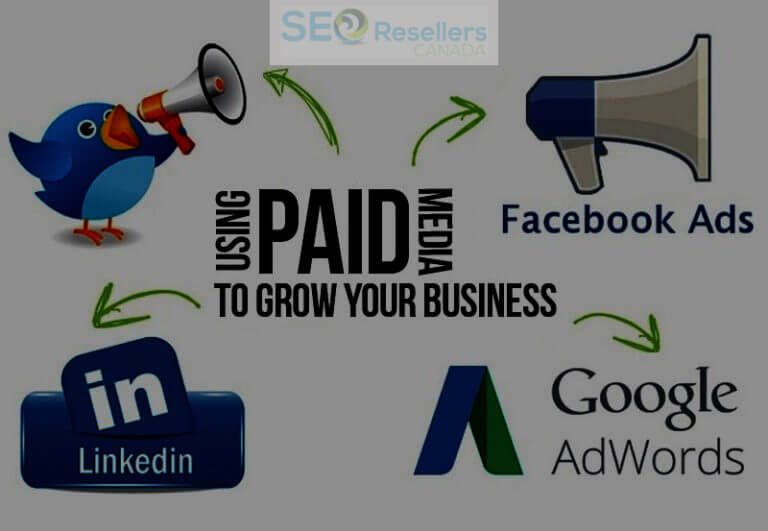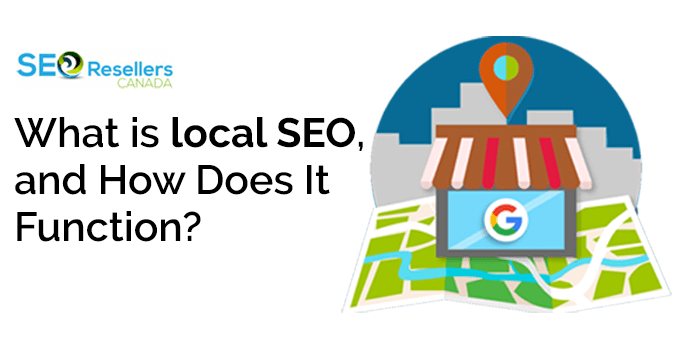A website is a great marketing tool. It represents your business on the Internet, and it’s one of the most important digital marketing channels you can use to get more traffic or make more sales.
Every business that wants to succeed online needs to have a clearly defined website marketing strategy.
This is no longer optional but a ‘must-have’ for businesses who want to survive in the highly competitive online market.
Now that you have a website up and running, you may think that your work is done from a marketing perspective.
But you would be surprised to know that this is just the first step toward gaining rewarding business opportunities through the online space.
You need to keep updating your website on a smaller scale to optimize for both people and Google.
1- What is Website Marketing?
Website marketing is the process of promoting your website on the Internet. It is one of the online marketing channels you can use as part of your overall digital marketing strategy.
The main goal of a website marketing campaign is to get more visits to your website.
Interested to know what these small tweaks would be? Then read on and be informed:
1.1- Step 1 – Get a 360-degree website analysis done
Every little element on the website needs to work towards a singular objective, i.e., boosting your brand visibility to the maximum number of potential customers for your business.
From a design perspective, you can check if the site is easy to read and easy to navigate with sufficient breadcrumbs for the user to find his way.
The website should be responsive and look and perform the same way on every type of OS, every screen size, and all browsers.
1.2- Step 2 – Optimize the website for SEO

Your website has to be compulsorily optimized for SEO.
Not doing this means you are losing a lot of valuable traffic to competitors who are ranking on top of the search engine results pages (SERP) rather than your brand.
While the techniques keep evolving, there are a few core SEO enablers that are evergreen. They are:
1.2.1- Keyword research
With keyword research, you can find out which search terms are applicable to your business (i.e., what terms do your prospective customers type in the search bar to discover businesses like yours).
Once you have done the keyword research, you can publish fresh blogs with these keywords for better rankings.
1.2.2- Link building
The Google bots examine how many content pieces link back to your website to assess the value of the content.
The more links from credible quality and authoritative websites, the better it is considered by the bots and rewarded with higher SERP rankings.
1.2.3- Content
Keyword-rich content is a primary SEO enabler to help you gain higher search rankings.
Ensure that the keyword is related to your industry and offers helpful information valued by the readers.
It is a good move to factor in readability first and SEO optimization later when drafting quality content.
1.2.4- On-site optimization
A lot of elements on the website need to be optimized to better tell Google what the site is about and if it is relevant to the search query typed by the user.
You can look at optimizing the meta descriptions, title tags, image alt tags by incorporating keywords organically within the elements.
1.3- Step 3 – Optimize Your Website for Social Media
The next step is to optimize your website for social media. This is not the same as social media marketing (we’ll talk about this in step 5), but it has to do with:
- Having visual elements (images, video) on your website that can be shared on social media networks.
- Adding social media sharing buttons on the pages, you want to be shared on social networks.
- Making sure that when a user clicks the share button (or shares your URL directly), the generated snippet is well-formatted. Adding the necessary open graph meta tags and using image sizes and formats supported by all major networks is recommended.
Many webmasters skip this step, and it’s a mistake that can negatively affect your social media promotion efforts.
While it looks like it’s more technical and not marketing related, it does play an important role.
If your website does not allow users to share your content properly, don’t expect any social media exposure.
1.4- Step 4 – Content Marketing – the most potent weapon

It is proven that those who blog more than 16 times a month have 3.5x more site traffic as compared to those who don’t.
This phase involves the creation and deployment of valuable content that engages and attracts readers. When such helpful content is published over time, the strangers get converted to customers.
A typical content strategy at the beginning would entail answering these questions.
- The different types of content (preferably on a single industry)
- What topics will your content focus on?
- How often will you publish new content?
Once this is done, a content calendar can be made to publish quality content regularly. Ideally, new content needs to be posted every 2-3 days.
1.5- Step 5 – Cultivate your brand’s social media presence

Using the techniques of social media marketing, you will be able to create a powerful social media presence that succeeds in giving you a competitive edge.
Instead of spreading yourself thin, make sure that you know what channels you will target and focus on the ones that have a higher share of your intended audience.
Create business profiles on these channels and keep its color scheme consistent with your other marketing collaterals.
Get your website links and other contact information on the page to help your customers reach you satisfactorily.
Now that the basic groundwork is done, you need to start posting compelling content that talks to your customers about your deals, your products, or your services.
This will improve engagement in the form of shares, upvotes, or likes.
1.6- Step 6 – Use Paid Ads to Reach More Customers

As soon as you get started with SEO and social media marketing, you’ll realize one thing.
It takes time for SEO to work and to get to a decent number of followers on social media organically.
This means that if you want results faster, you need to add one more ingredient to your website marketing, and that is paid advertising.
With paid advertising, you can get targeted traffic fast and start making sales or conversions.
There are various advertising platforms you can use, but the most common are:
1.6.1- Google Ads
Target people based on the search terms they use on Google or show your ads on other Google properties (YouTube, Gmail) and websites that participate in Google AdSense.
1.6.2- Facebook Paid Ads
Promote your Facebook page, social media postings, or ads to people using Facebook, Instagram, or Facebook Messenger.
Both methods are very effective, but you should be careful not to waste a lot of money on advertising without a return.
Better start with a low budget and measure the effectiveness of your campaigns and add more money as long as there is a positive ROI.
1.7- Step 7 – Use the prowess of email marketing

Once you have a wide array of content assets with you, your brand can give more muscle to your website marketing strategy by employing email marketing tactics.
This type of marketing improves the discoverability of your brand among your target audience and helps in the better volume of site traffic.
Make an email list of your current customers and the business inquiries data your website received.
Then you need to work on new leads where you offer something of value in return for their email id to be added to your email marketing list.
Content assets like guides, e-books, video tutorials, and checklists can be great avenues to get the opt-in from prospects to be contacted in return for free downloads of these content assets.
1.8- Step 8 – Complement SEO with PPC
It is essential to note that getting organic results via only SEO campaigns might take time.
In case you are looking for an acceleration in conversion online, then you need PPC or paid ads as a part of your bigger digital marketing tactics.
You can explore two key success drivers in this context –
1.8.1- Google PPC advertising

With Google AdWords, you can get your listing on top of the organic search results.
This helps bring more visitors to your site and a better level of engagement. You can get visibility to boost two ways
- Google search ads – they appear on the search engine results pages above the organic results.
- Google display ads – they appear on the top, bottom or on the side of the websites that are a part of the Google display network.
1.8.2- Social media advertising

Sites like Facebook provide plenty of ad targeting opportunities for brands to make their presence felt on the world’s largest social media platform.
These Facebook ads will target only those people who are likely to be interested in your brand’s product/ services.
1.9- Step 9 – Use Remarketing to Get Users Back to Your Website

Do you know about the rule of 7? It’s a rather old marketing rule which states that a potential client should see or hear an ad (or message) at least 7 times before they’ll take action to buy a product or service.
This is applicable to internet marketing as well. In website marketing terms, this means you need to get users to re-visit your website a number of times before they proceed to the next step of your funnel.
Publishing new content on a frequent basis and using social media marketing and email marketing are all great ways to achieve this, but there is one more method that is highly effective, and this is remarketing.
With remarketing, you use advertising platforms (either Google Ads, Facebook, or even Twitter) to re-connect with people that visited your website at least once.
This has a number of advantages, including more targeted traffic, lower advertising costs, and higher conversion rates.
1.10- Step 10 – Keep Your Website and Content Up-to-Date and Move Forward
When you do website marketing, you should not forget two important things:
1.10.1- First: To keep your website up-to-date
This means upgrading your website software to the latest version, ensuring that your website is secure and that is using the latest technologies.
For example, as part of your strategy, you may consider accelerated mobile pages (AMP), which is the new HTML format supported by Google and other networks.
1.10.2- Second: To keep your content fresh and relevant

Besides publishing new content targeting specific keywords and increasing your organic reach, you also need to go back and audit your existing content.
As your website gets bigger and older, some of your content will become outdated, and this is not good for users or search engines.
The first step of the process is to find thin content pages. These are pages that have no rankings, backlinks, or traffic.
Maybe the content on those pages is good, but since they don’t rank for anything, they don’t offer any real value to your website. As part of the audit, you should decide to either:
- Update and republish them
- Remove them and redirect the URL to other related pages on your website
- Merge them with other pages
The second step is to review your Google analytics and Google search console reports and find out which are the most popular pages of your website.
A page that has high rankings now does not mean that it will maintain those rankings forever.
The competition is big, and the chances are that new pages are published on a daily basis targeting exactly the same topics.
To make sure that you will not lose your rankings, you need to review your top pages once every few months and ensure that the content is still relevant and up-to-date.
1.11- Step 11 – Measure, Analyze, Rinse, and Repeat
No marketing strategy is complete without proper monitoring. In the digital marketing world, everything can be measurable and analyzed, so it’s important to have the right tools and metrics in place.
In the majority of cases, you can get the data you want from Google Analytics. So, you need to make sure that you have Google Analytics installed on your website and properly configured.
The most common goals of a website marketing campaign are to:
- Get traffic to your site
- Increase conversion (makes sales, get new email subscribers, etc.)
These goals should be tracked in Google analytics and analyzed so that you can make the right decisions.
For example, if you notice that posts covering certain topics perform better than others, you should focus your marketing efforts on creating content that is around those topics.
2- To sign off
Please be advised that as a smart marketer, you should not stop at just rolling out the strategy and not doing anything further.
You need to implement it across the right channels and monitor the impact of these programs.
This way, you can ensure that your website marketing strategy never veers off-course, and it continues delivering on the expected outcomes successfully.
A website is a great marketing tool, and there is no doubt about that. Before starting a web marketing promotion campaign, review your website, and make sure that it represents your business.
A good website is mobile-friendly, fast, and has a simple hierarchical structure.
Next, spend time on SEO. This is a critical success factor for any online marketing campaign.
If you can get your SEO right and start ranking for keywords that matter for your business, everything else becomes easier. While waiting for SEO to work, jump into social media marketing, and paid advertising.
These two channels can drive targeted traffic to your website faster than any other method.
When traffic starts to flow in, it’s time to think about your email marketing and remarketing strategies. Both channels can convert traffic into customers better than any other channel.
Last but not least, don’t forget to go back and review your website and content and ensure that it’s always up-to-date and relevant to satisfy the user intent.
What other strategies have you used to improve your website’s outreach and engagement? Do write to us and let us know in the comments box below.
Editor’s Note: This post was originally published on October 22, 2019, and has been completely revamped and updated for accuracy and comprehensiveness.

















